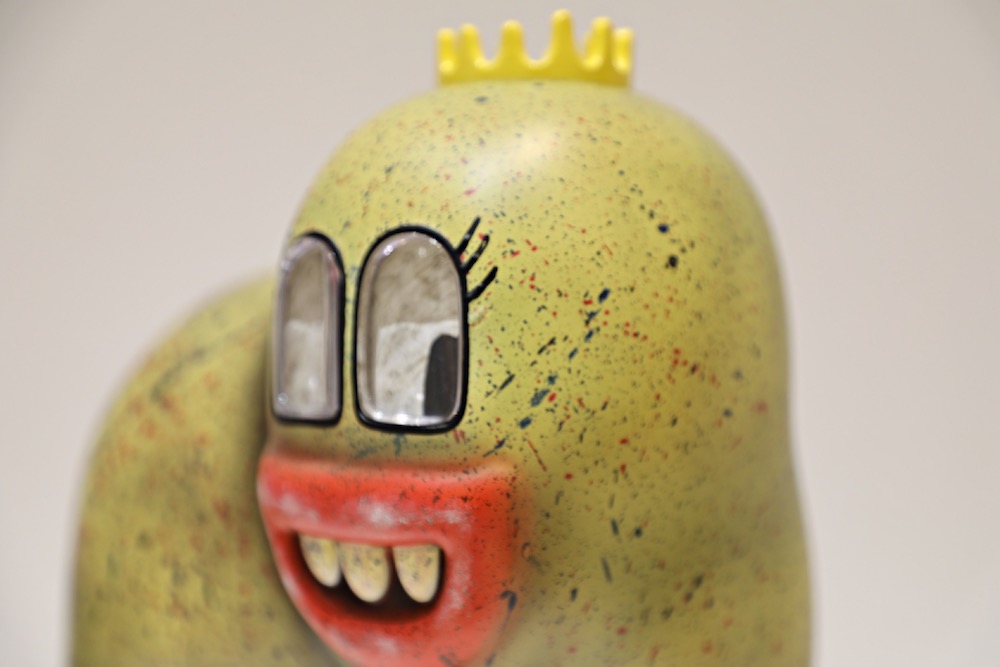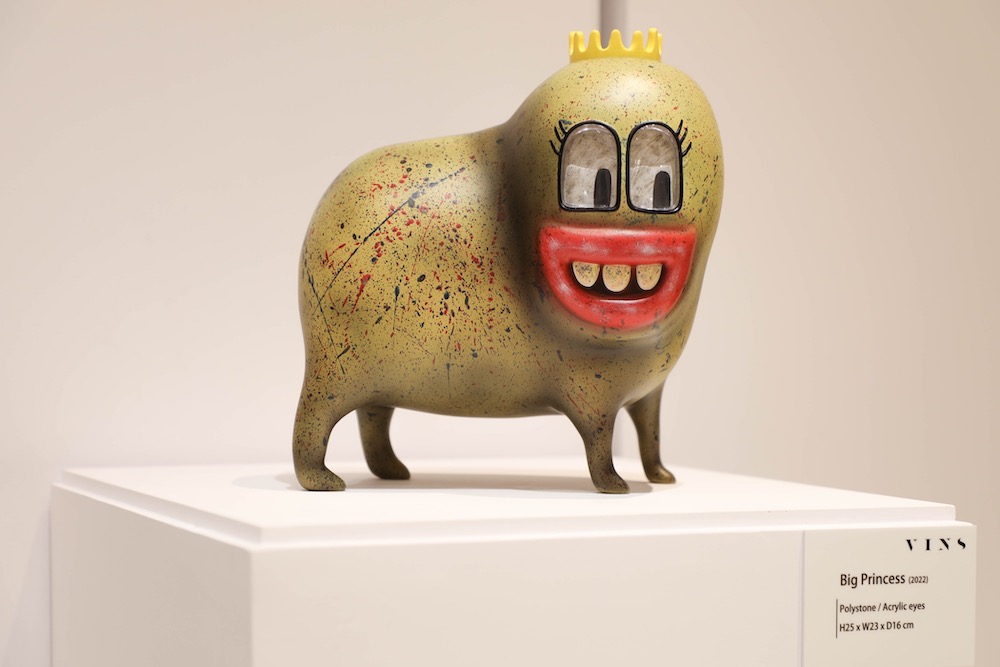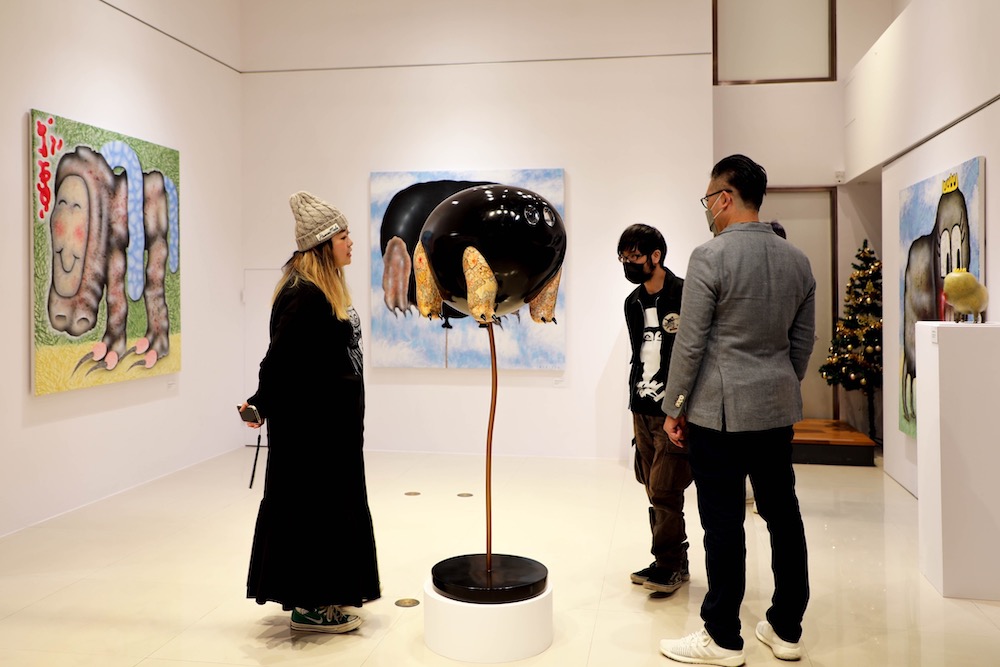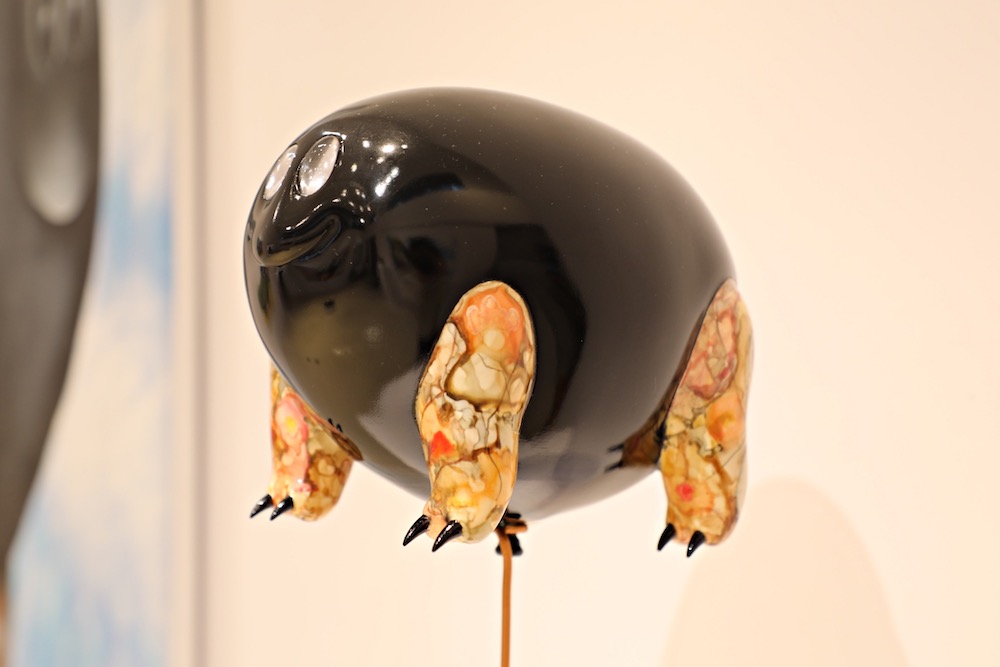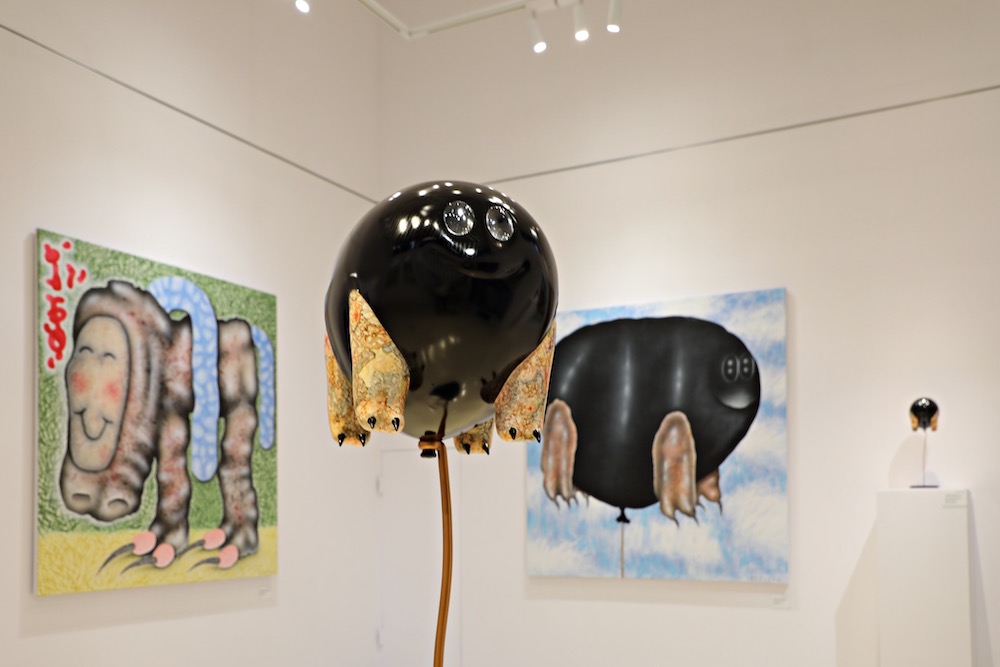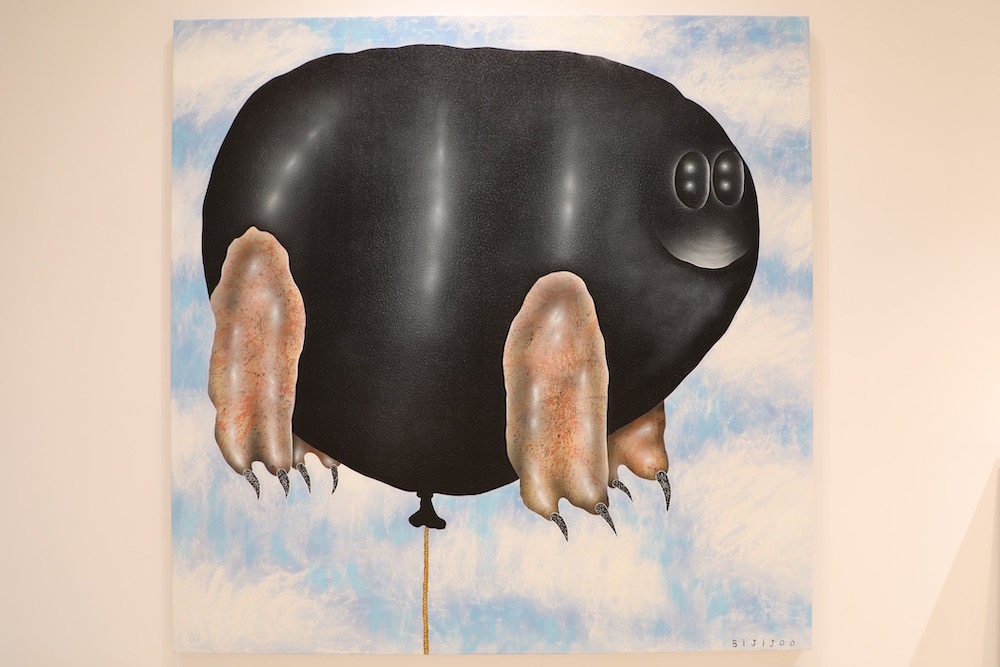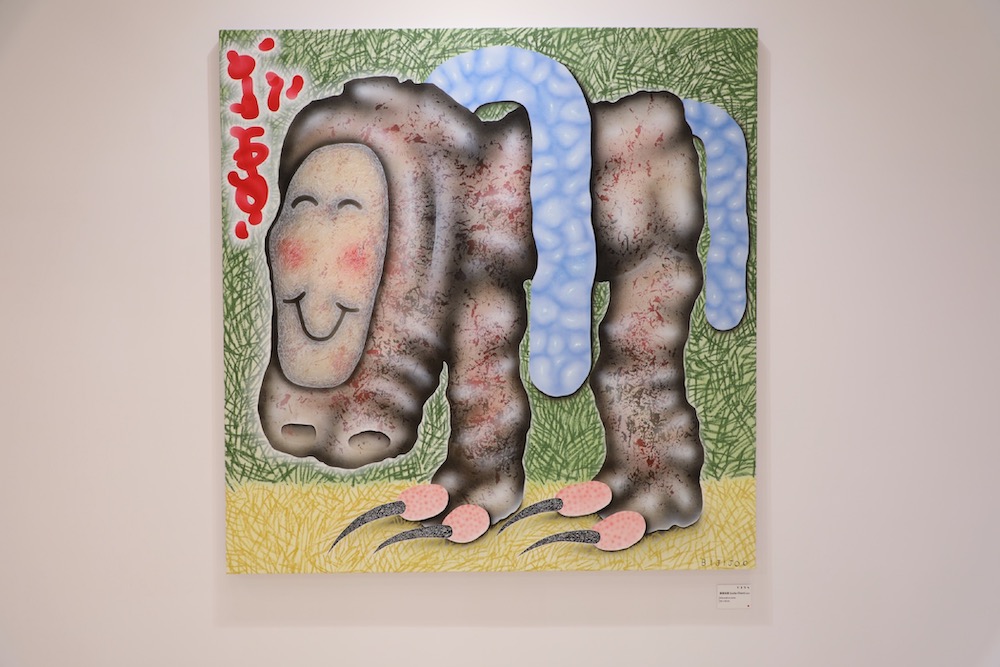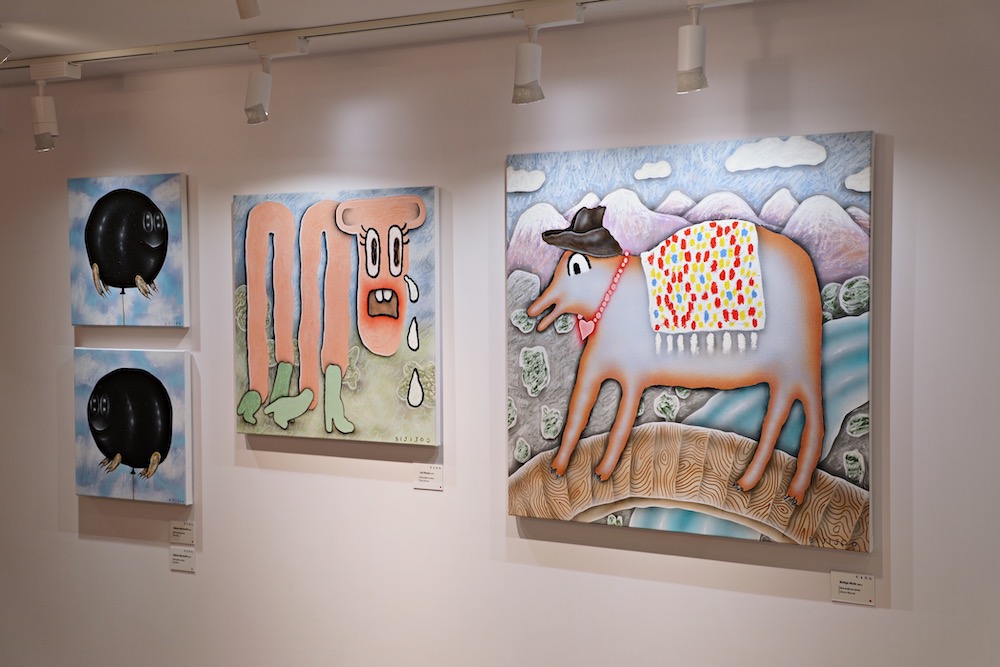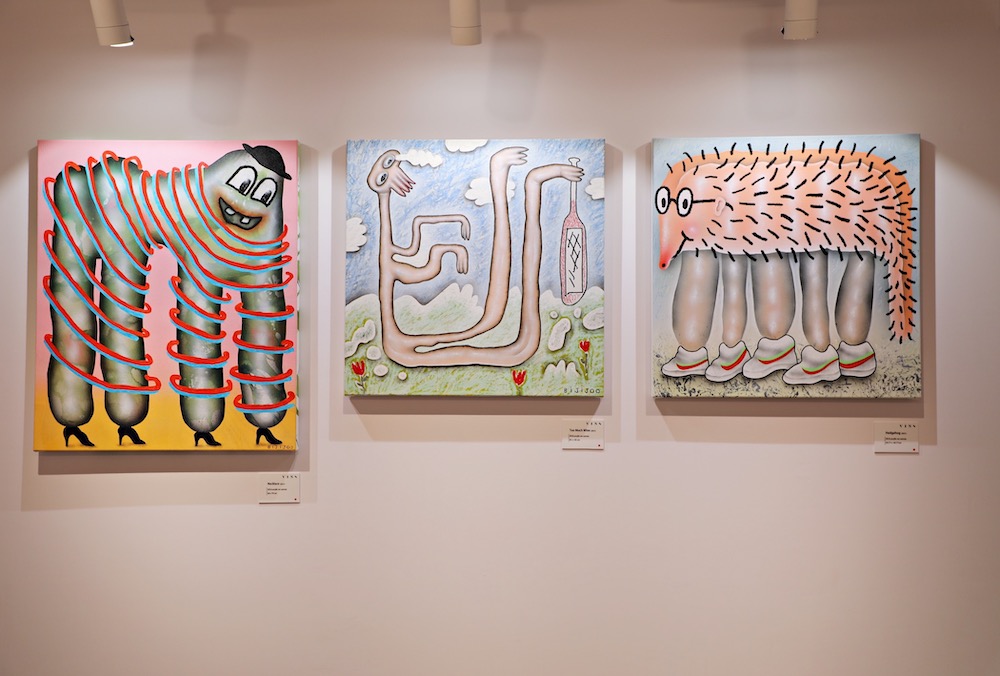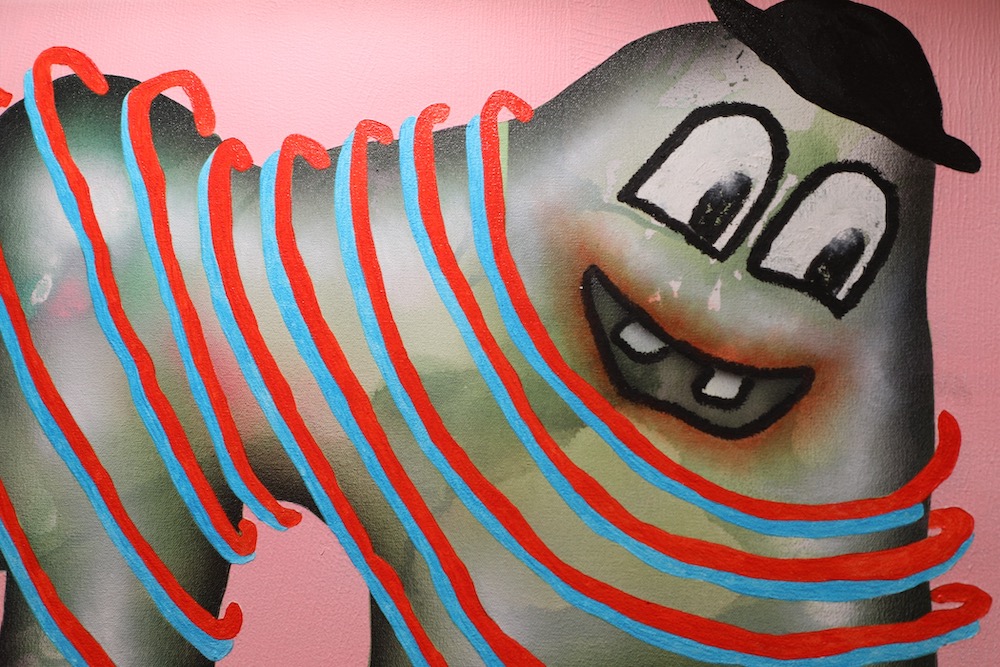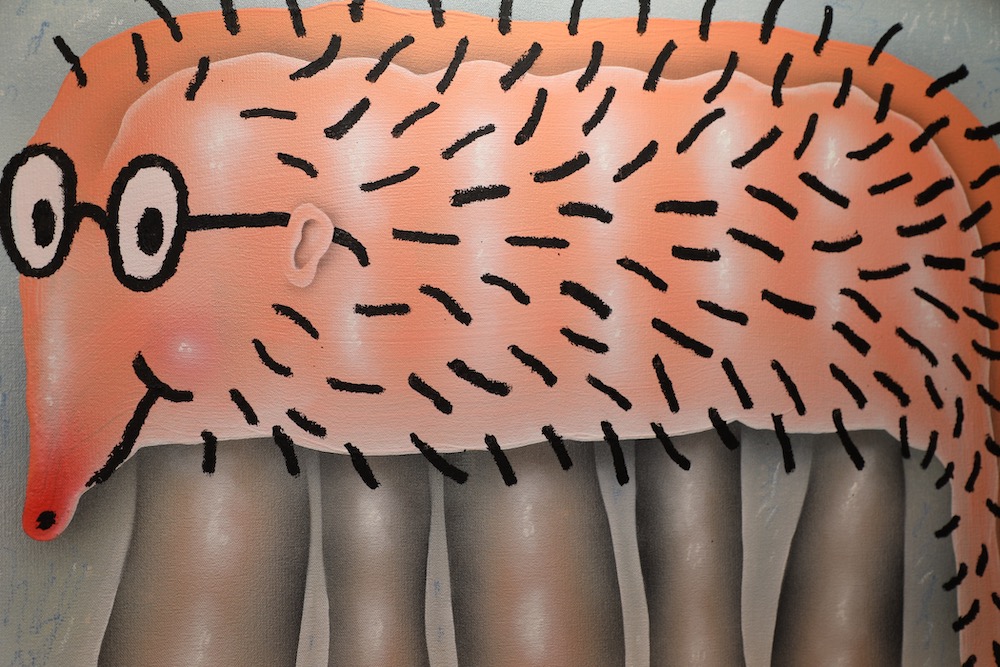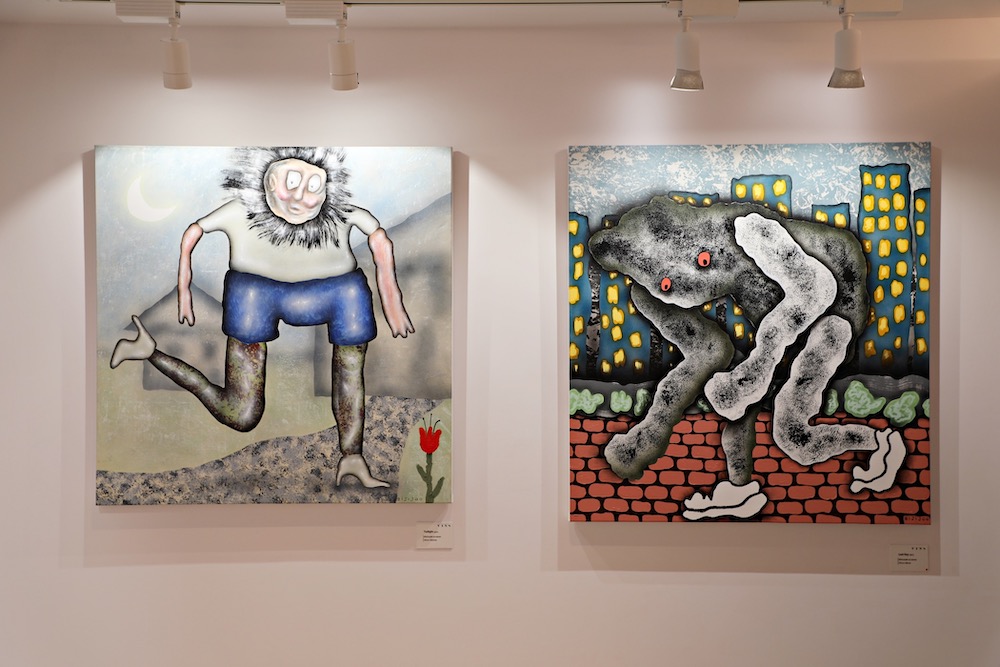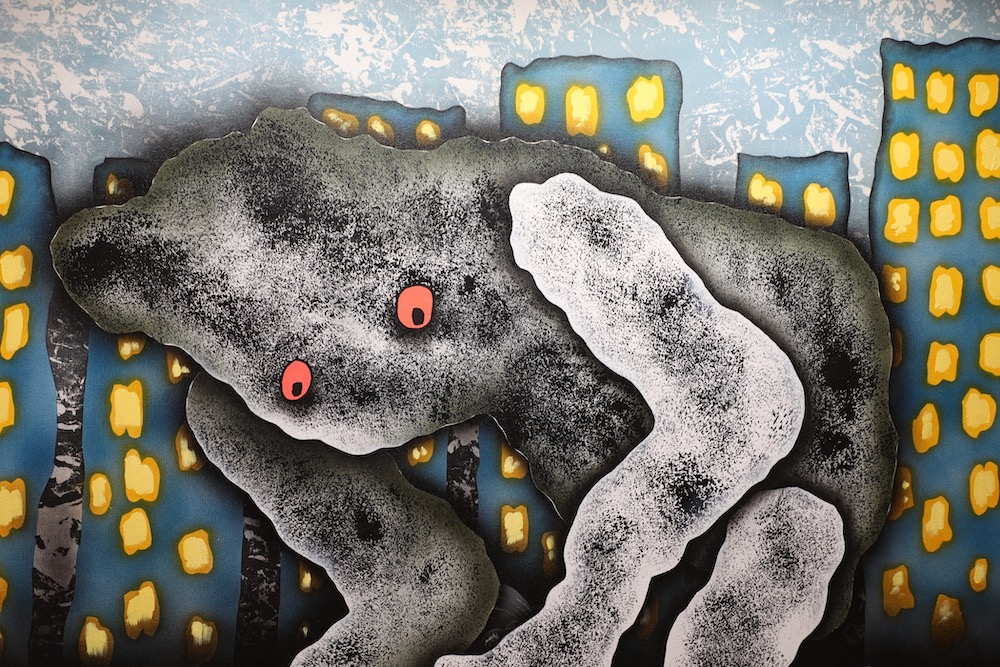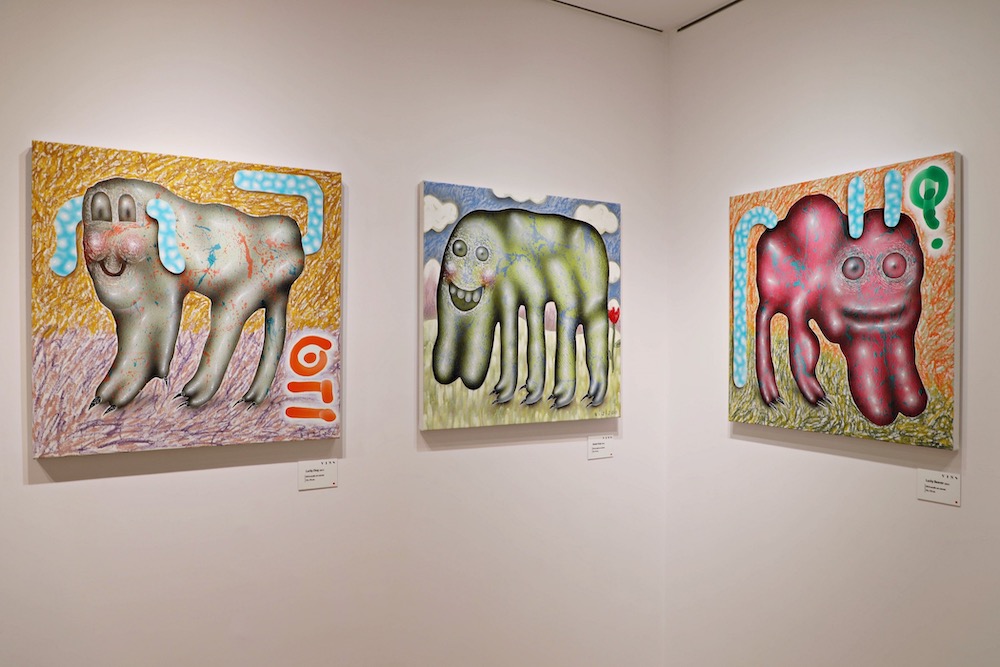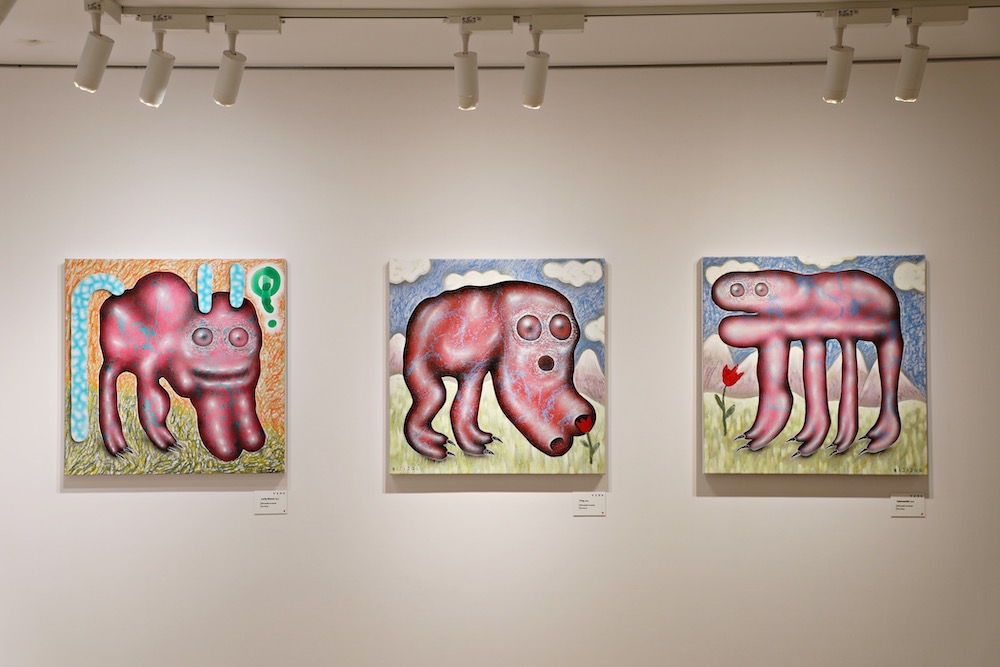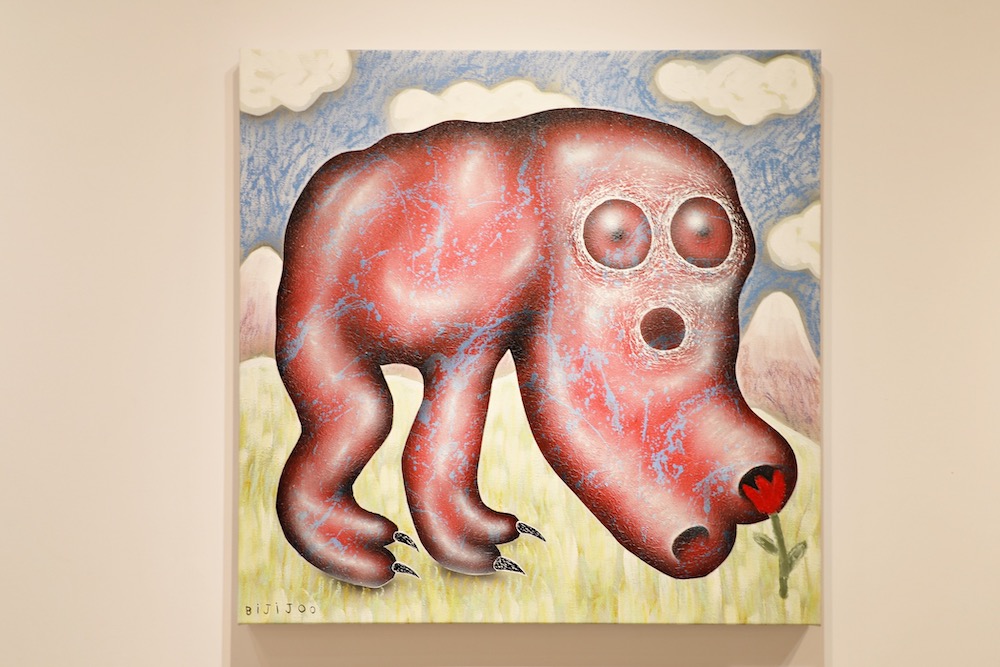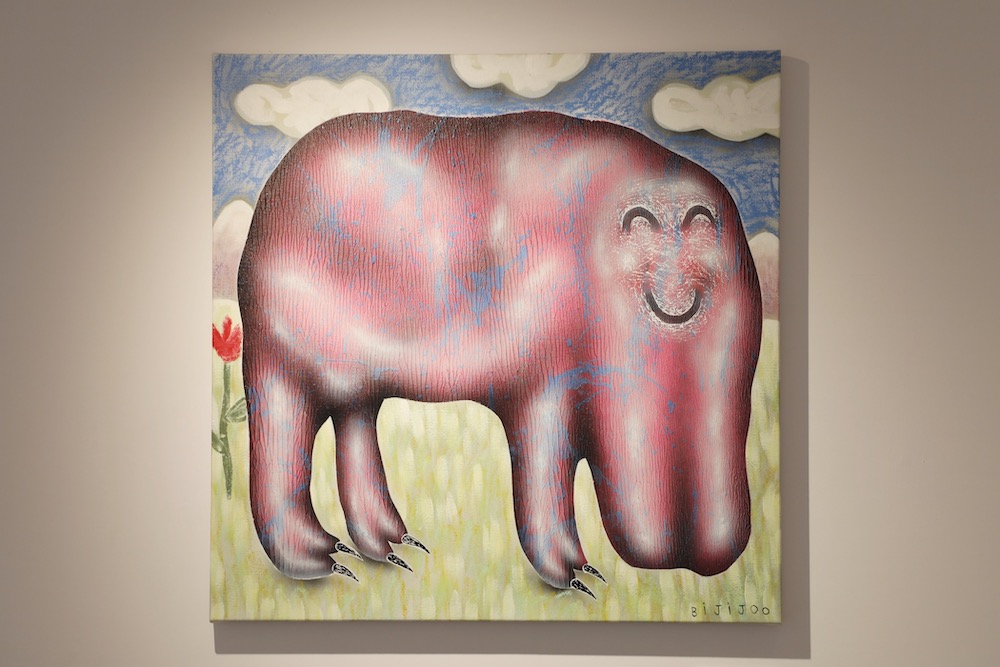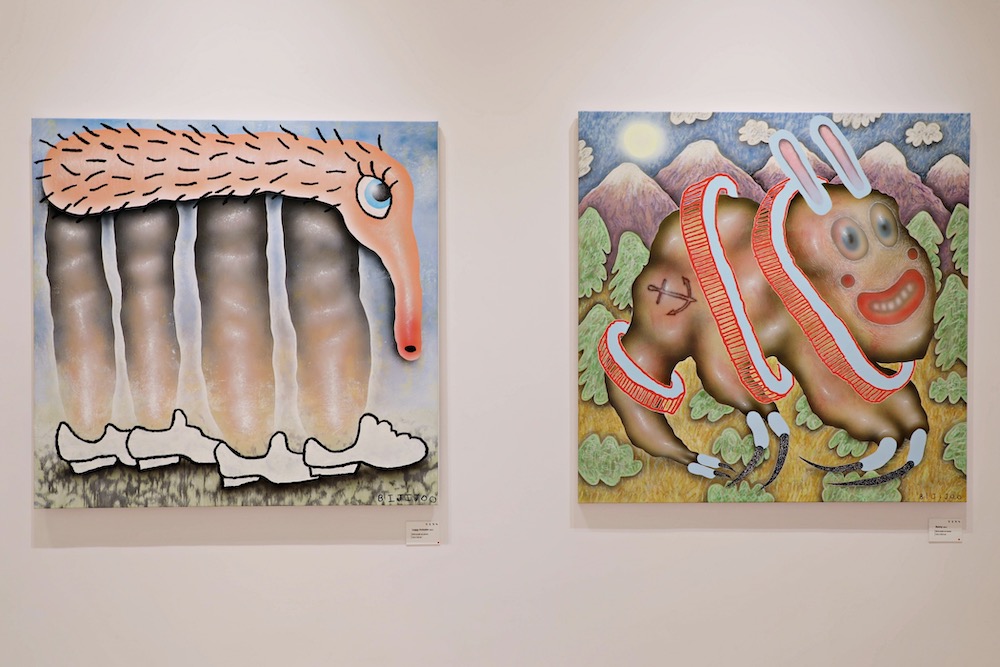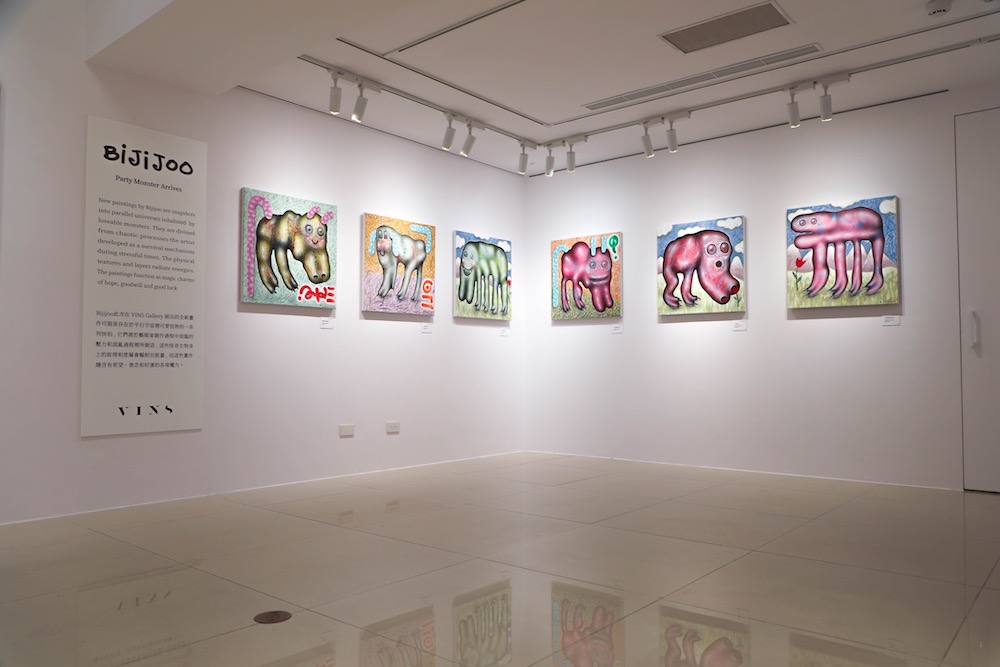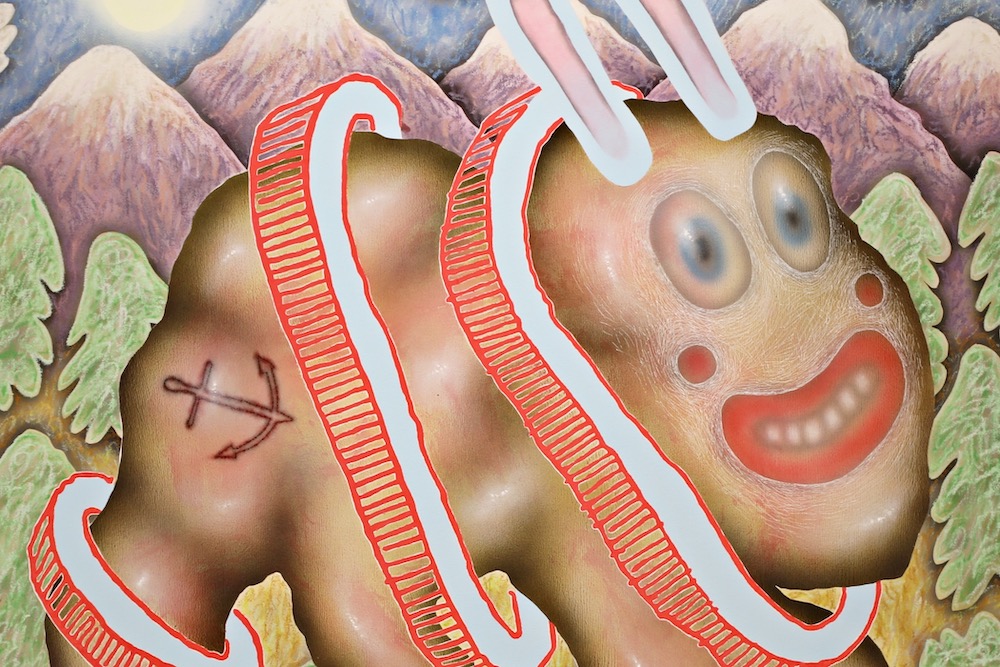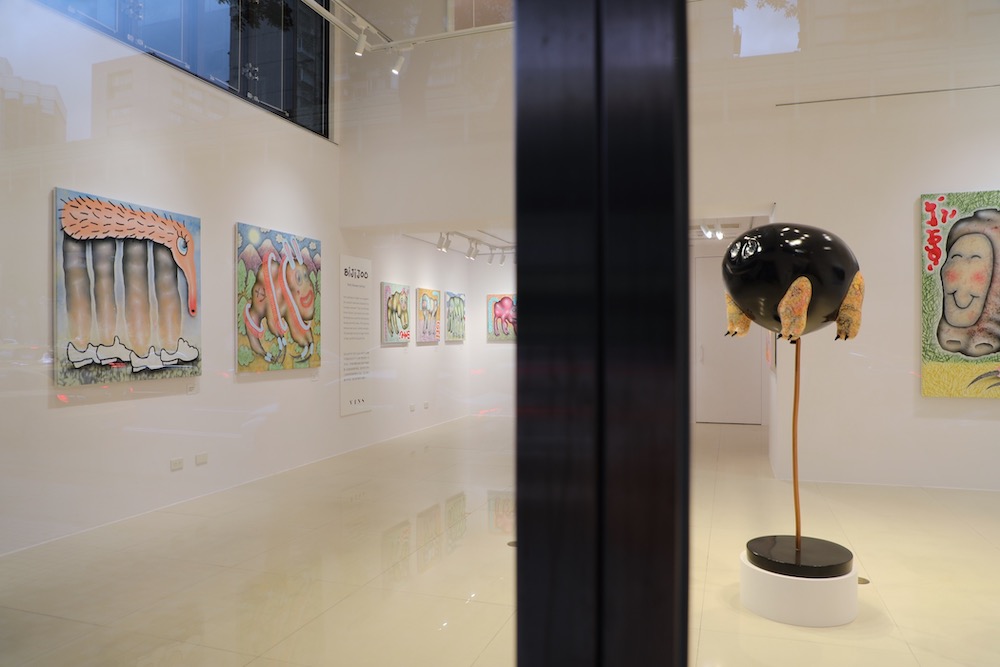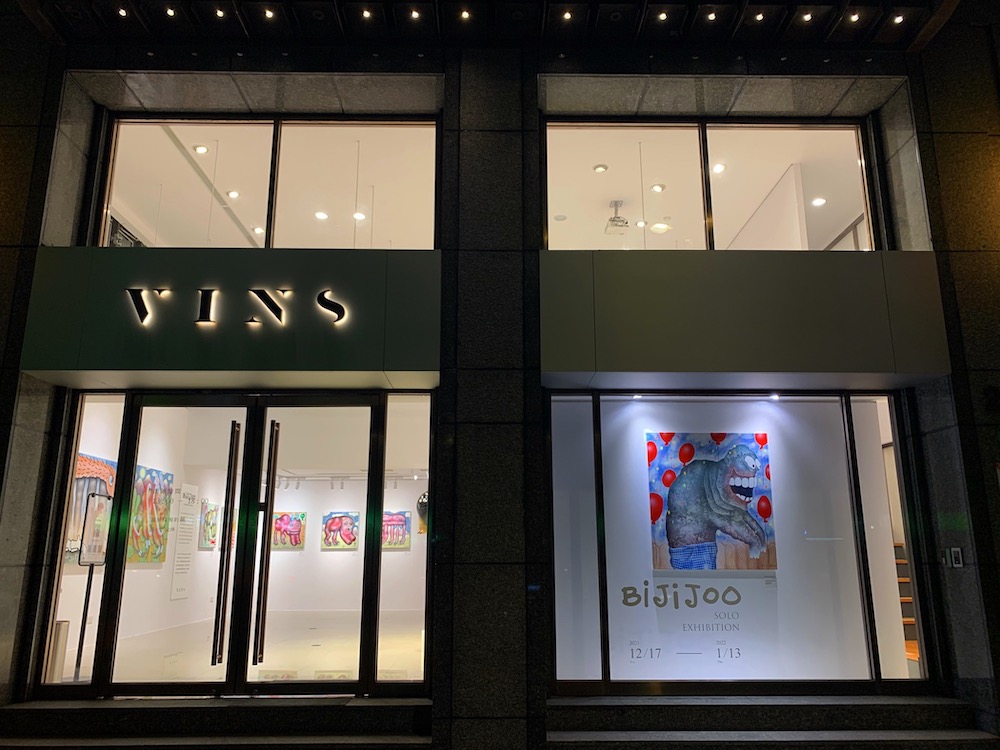Michael Todd Horne, better known as Bijijoo, had wrapped his 2021 with a big international solo debut, an inaugural exhibition at the new Vins gallery space in Taipei, Taiwan which closes this week. Half a year after his last exhibition in NYC, the Portland-based artist introduced a significant body of work comprising some 30 pieces, including new paintings and three sculptures, as well as a new sculptural edition.
With a Ph.D. in chemistry (biophysics), experimentation and research had always been important aspects of everything that Bijijoo has been endeavoring into. Over time, especially during the recent pandemic years, his studio turned into somewhat of a laboratory in which he has been exploring different materials, techniques, the ways they interact, and the possibilities of manipulating or controlling them. In the past, he has been trying out figurative, abstract, and conceptual work in a variety of media, including writing, music, and video, and has been working on the current type of work only since 2018. Relying on his technical background in math, science, and computer programming, as well as being inspired by his young daughter’s imagination, he developed a process that intertwines traditional and digital techniques. Serving as a sort of a break from the uncertain reality, this process-driven experimentation gave the artist a chance to have a say in the otherwise highly unpredictable undertaking.
Working with such uncommon methods resulted in the creation of the most unusual and unexpecting textures, surfaces, patterns, and grains, which provide the basis of the universe usually depicted in his work. Simultaneously, similar to the evolution itself, this chaotic technique allows for virtually infinite ways of developing his characters, imaginary monster-like creatures that regularly dominate his scenes. "The physical textures and layers radiate energies and the paintings function as magic charms of hope, goodwill, and good luck," Bijijoo told Juxtapoz about the way his paintings are capturing the spirit of his process and what this process means to him. While searching for ways or at least the illusion of controlling the chaos that happens when layering a variety of mixed media, the given elements are being used to amplify interplays of light, color, and textures. These finally define the monster-like protagonists as grotesque exaggerations of life in form of monstrous cartoons. In the end, it's the interactions that Bijijoo creates between the experimental sections that eventually create a sense of narrative, suggesting experiences, interactions, or emotions. - Sasha Bogojev



